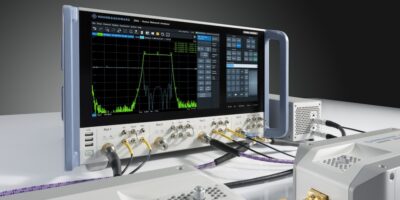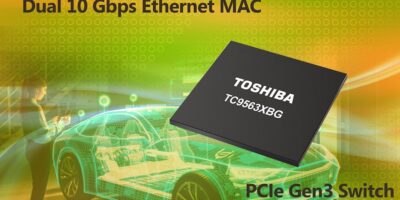Rohde & Schwarz and FormFactor have supported the University of Texas at Austin in a research project to characterise a new technology for RF switches. The aim is to improve battery life performance and support higher bandwidths and switching speeds.
In 2020, the university published research on an RF switch technology based on hexagonal boron nitrite (hBN). The technology is energy efficient and allows higher bandwidths and speeds, making it ideal for 5G. In a follow-up project, Rohde & Schwarz and FormFactor supported further research to characterise the RF switch technology at sub-THz frequency ranges, in particular at the D-band (110 to 170GHz), for applications beyond 5G and 6G.
RF switches are used in all forms of transceivers. For example, current 4G and 5G smartphones switch between transmit and receive mode or between different frequency bands, networks, and technologies. Today’s switches need to operate constantly to change between the various states and in doing so consume a lot of power, affecting the battery lifetime of the device. The new RF switch technology stays off until required to switch to a different state, making it up to 50 times more energy-efficient.
Professor Deji Akinwande, from the Cockrell School of Engineering’s Department of Electrical and Computer Engineering at University of Texas Austin, commented: “By using the test and measurement solutions from Rohde & Schwarz and FormFactor our team was able to further characterise this new technology at the D-band, which is a frequency band of global interest for future 6G applications. The equipment was configured in an easy-to-use setup that provided reliable measurement results”.
The test setup consisted of a four-port R&S ZNA43 vector network analyser from Rohde & Schwarz connected to R&S ZC170 frequency extenders that allow to carry out S-parameter and intermodulation distortion (IMD) measurements at frequencies between 110 and 170GHz. There are dedicated IF inputs on the rear of the R&S ZNA43 for reference and measurement signals as well as high power LO signal for the two converters on the VNA, and its front panel ports which are typically used for these signals are available for additional measurements up to 43GHz without the need to re-calibrate the instrument. A graphical user interface (GUI) eases configuration and pertinent signal parameter routing to the converters, says Rohde & Schwarz. The converters were used within FormFactor’s Cascade Summit 12000 probe station, mounted to the mm-wave/THz positioning system. FormFactor’s WinCal XE software tool allowed was used to calibrate the test set up.
The Rohde & Schwarz technology group operates in test and measurement, technology systems, and networks and cybersecurity. Founded more than 85 years ago, the group partners with industry and government customers around the globe. The company is headquartered in Munich, Germany.







